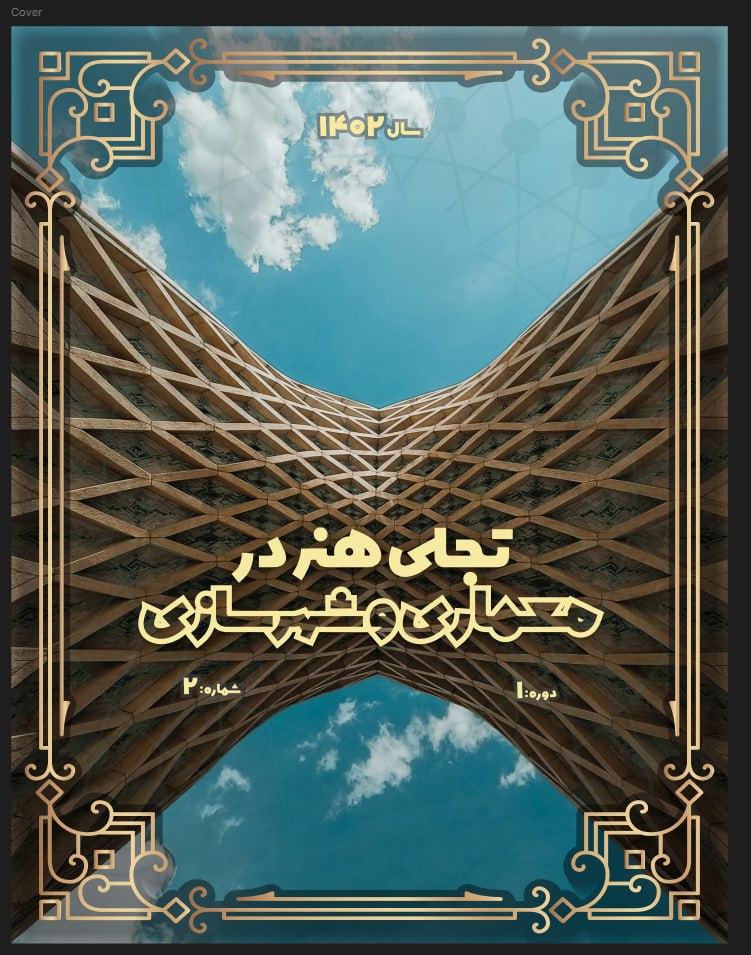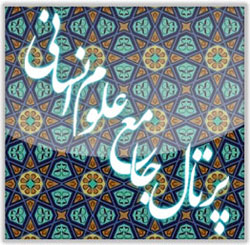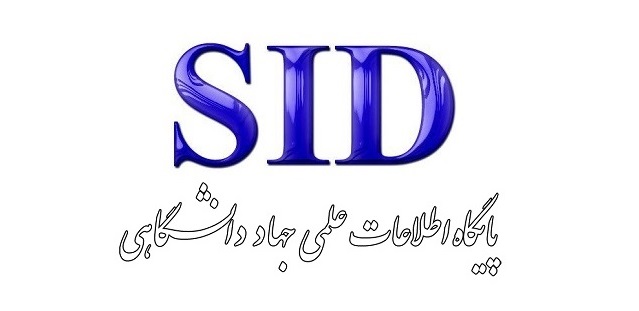زیبایی متعالی و نقش تزئینات در آشکارسازی امر قدسی در معماری اسلامی
کلمات کلیدی:
زیبایی متعالی, امر قدسی, معماری اسلامی, هندسه قدسی, خوشنویسی, رنگ و نورچکیده
این مقاله با رویکرد مرور روایی و تحلیل توصیفی به بررسی مفهوم «زیبایی متعالی» و نقش تزئینات در آشکارسازی امر قدسی در معماری اسلامی میپردازد. پژوهش حاضر با تکیه بر منابع فلسفی، عرفانی و مطالعات معاصر معماری، نشان میدهد که بناهای اسلامی فراتر از عملکرد فیزیکی، عرصهای برای تجربه روحانی و هدایت ادراک حسی به سوی معنا و حقیقت متعالی هستند. در این مسیر، هندسه قدسی با نظم کیهانی خود ذهن را از کثرت به وحدت میبرد و با الگوهای بیپایان و ریاضیات نمادین، بازتابی از هستیشناسی اسلامی را عینیت میبخشد. خوشنویسی نیز با تجسم کلام وحی در کالبد بنا، پلی میان زیبایی بصری و حضور معنوی میسازد و با قرارگیری هوشمندانه در نقاط شاخص، تجربه قدسی را تقویت میکند. رنگ و نور به عنوان رسانههای حسی و روانی، با بار نمادین و تأثیر آرامبخش خود محیطی مناسب برای مراقبه، دعا و شهود فراهم میآورند و مخاطب را از تجربه سطحی به درک عمیق هدایت میکنند. یافتهها بیانگر آن است که تزئینات اسلامی نه زینتی صرف بلکه نظامی معنایی و معرفتیاند که با همافزایی، حرکت از محسوس به معقول را محقق میکنند. این درک میتواند راهنمایی ارزشمند برای طراحی معماری معاصر باشد تا ضمن بهرهگیری از فناوری و نوآوری، روح قدسی و زیبایی متعالی در فضاهای عبادی و فرهنگی امروز حفظ شود.
دانلودها
مراجع
1. Ayyad E. What Made a Place Holy in Early Islam? An Inquiry Into Meaning and Doctrinal Modalities. Journal of Al-Tamaddun. 2024;19(1):25-46.
2. Ruggles DF. Islamic Architecture (622–1500). 2023.
3. Zahra F, Shahir S. Spiritual Aesthetics of Islamic Ornamentation and the Aesthetic Value in Islamic Architecture. Journal of Islamic Thought and Civilization. 2022;12(1):164-75.
4. Abrar M, Munir A, Safwan. The Effect of Islamic Ornament as Secondary Skin on Daylight Quality. Iop Conference Series Earth and Environmental Science. 2024;1356(1):012070.
5. Fauziah F. A Semiotic Analysis of Cultural and Religious Symbolism in the Ornaments of an-Nur Grand Mosque Riau. Islam & Contemporary Issues. 2025;5(1):112-8.
6. Tribak M, Klaina M. The Evolution of Mosque Architecture and the Distinctive Characteristics of Its Structural Elements. Journal of Multidisciplinary Science Mikailalsys. 2025;3(2):1031-55.
7. Husni MFD. Authenticity in Islamic Sacred Spaces: Case Studies of Distinctive Regional Mosques. JSCSR. 2024;1(2).
8. Kutty BA. The Influence of Sufi Cosmology on Spatial Design in Islamic Architecture. International Journal of Research and Scientific Innovation. 2025;XII(VII):774-90.
9. Guzmán F. Architectural Theory and Theology of the Catholic Church Ornamentation in Spain and Hispano-America (Sixteenth Century): A Concept That Transcends the Mere Decorative. The Catholic Historical Review. 2025;111(3):447-77.
10. Awaliyah DN. The Symbols of Inculturation and Interfaith in the Demak's Great Mosque. Sunan Kalijaga International Journal of Islamic Civilization. 2024;7(1):127-52.
11. Inagurasi LH. The the Ornaments of Langgar Bubar, Kudus: Type and Placement. Jurnal Sociohumaniora Kodepena (Jsk). 2023;4(2):286-2293.
12. Zainazlan AFB, Jamal KAA, Hamidon NA. Lighting Methods Using Islamic Typographic Ornamentation Design Analysis in Achieving Indoor Environment Quality. 2025:147-86.
13. Kamran SP. Imaging Spirituality: An Ethnographic Study of Surface Decoration in Maryam Zamani Mosque. Journal of Arts & Social Sciences. 2023;10(2):117-25.
14. Wijayanti L, Raharja IGM, Maharani IAD, Artadi IMP. The Transformation of Toraja Ornament’s Meaning on Dharmawangsa Square Tator Café Applying Hermeneutic Theory. International Journal of Social Science. 2025;4(5):689-96.
15. Nasidi NA. Some Biographical Notes on Artists of Sacred Sufi Painting in Kano, Nigeria. Journal of West African History. 2023;9(2):1-20.
16. Widyastomo D, Nion WM. The Symbolic Architecture and Meaning of the Church of GKI Jahja Sasari, Biak Numfor Regency, Papua. International Journal of Scientific Research in Science Engineering and Technology. 2024;11(2):521-9.
دانلود
چاپ شده
ارسال
بازنگری
پذیرش
شماره
نوع مقاله
مجوز
حق نشر 2025 ملیحه صادق پور (نویسنده); حسین اردلانی; اعظم واعظی , زهرا مرادی (نویسنده)

این پروژه تحت مجوز بین المللی Creative Commons Attribution-NonCommercial 4.0 می باشد.









